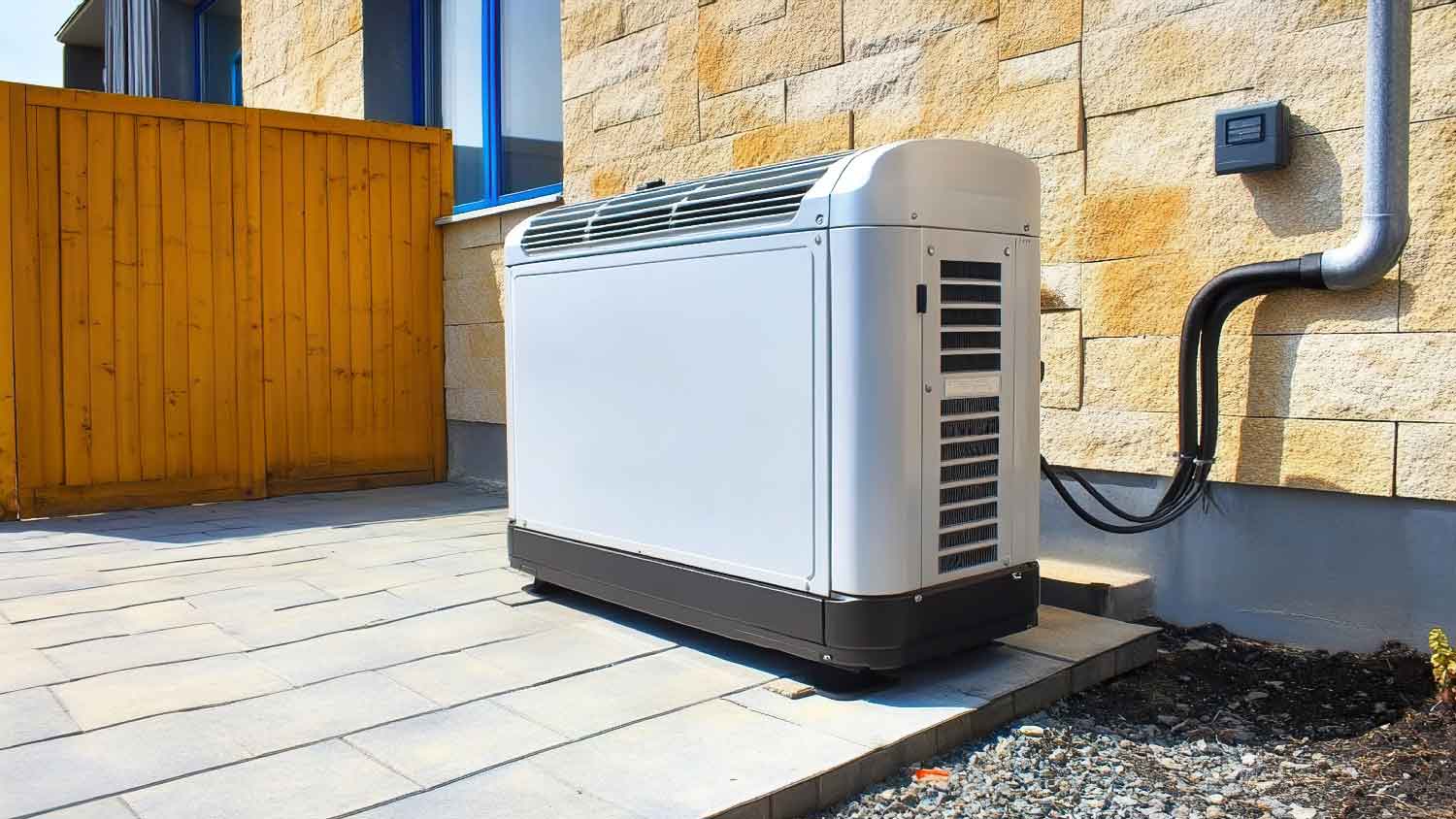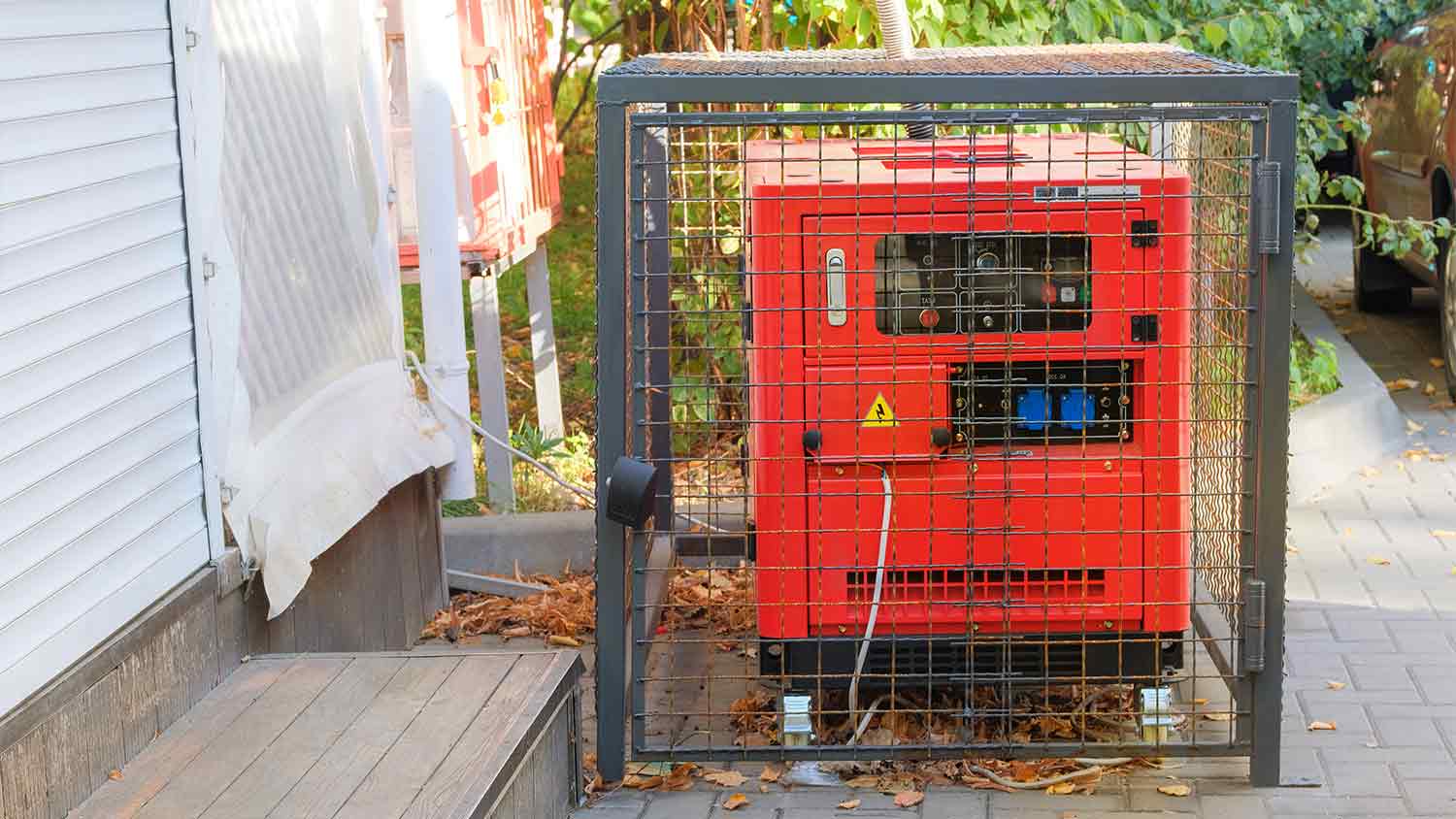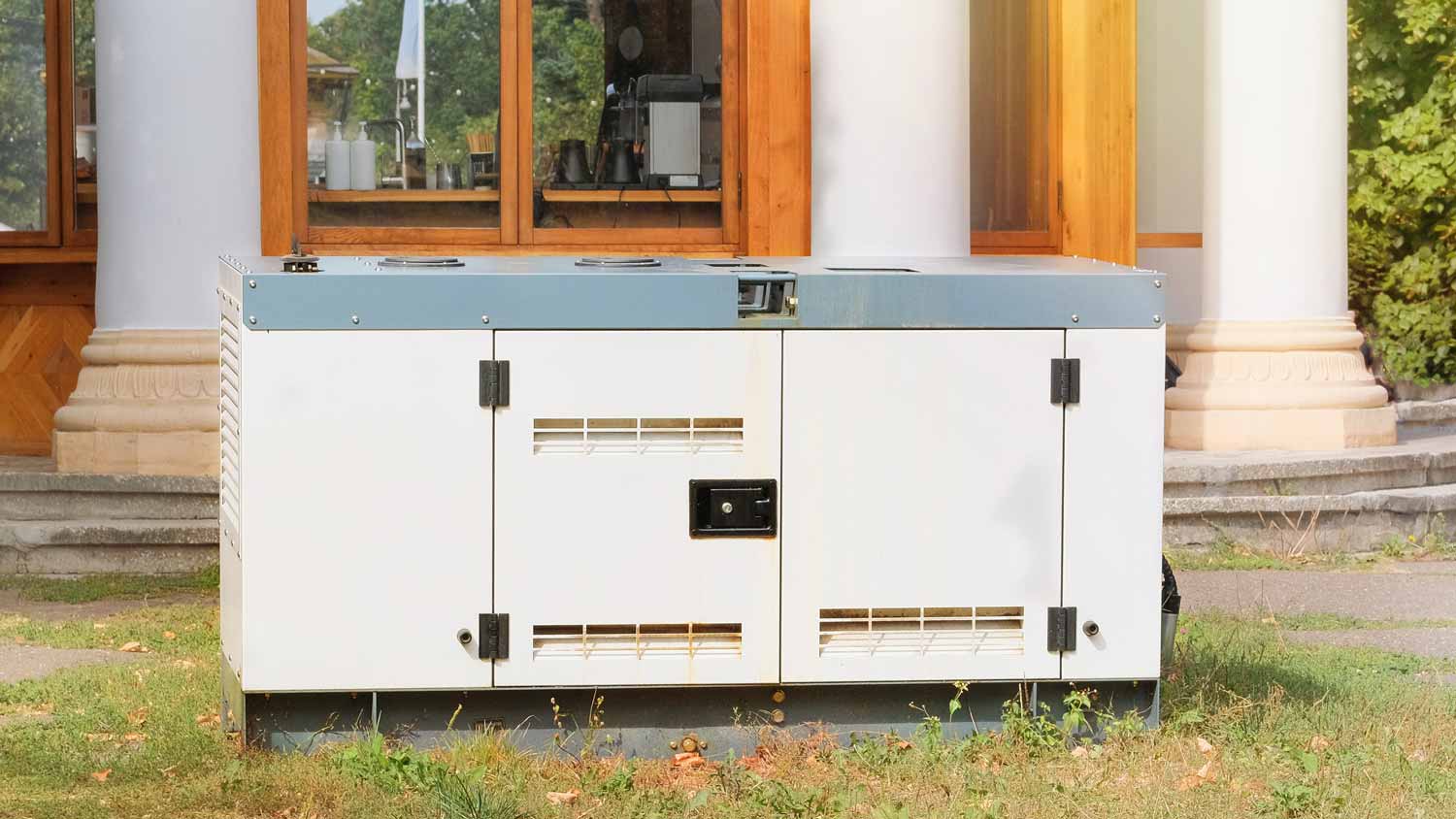How to Use a Portable Generator: A Complete Guide
Safely set up a portable generator for your power needs


Not everyone needs a whole-home generator to pump out watts for all their appliances, but a smaller portable generator can prove incredibly useful. Learning how to use a portable generator to power necessities during a power outage or produce electricity on the go.
Fortunately, portable generators are easier to set up than their permanently-placed counterparts. We’ll walk you through every step of using a portable generator.
Why Do I Need a Portable Generator?
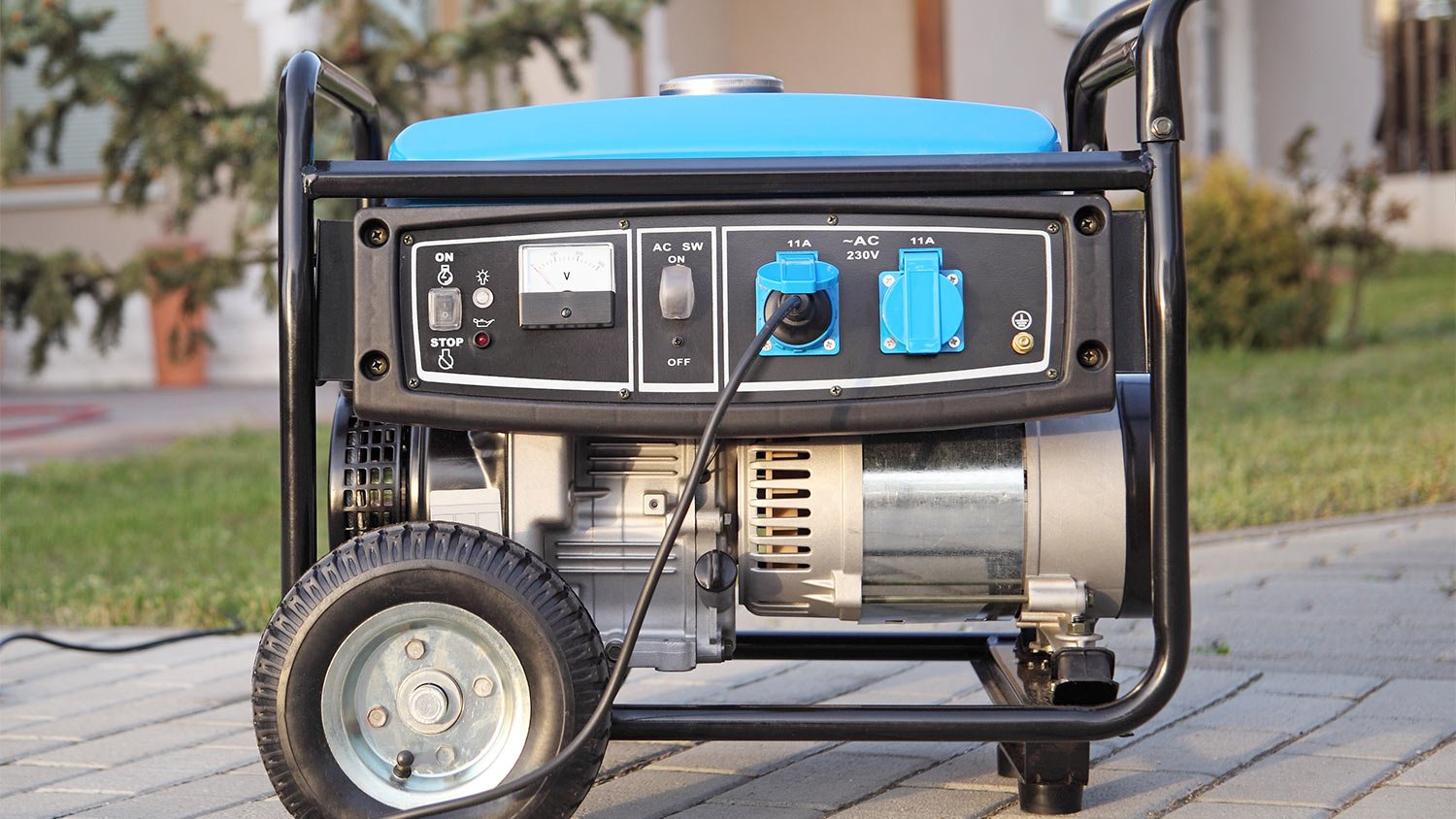
Portable generators offer on-demand electricity during important situations, including:
You experience occasional electricity issues: If your home doesn’t experience many blackouts, you probably don’t need a home standby generator. But in the event that your power cuts out, it’s important to have a portable generator at hand to keep your fridge from thawing and other important tasks.
You have vulnerable core systems: Some vital home features aren’t always on the grid or are particularly important. For example, if you have a well or a sump pump, a portable generator can keep them working if other methods fail.
You need to use power in multiple locations: A home standby generator is specifically designed for permanent installation to power a home. A portable generator is easier to move to a cabin, park, trailer, or camping site as needed.
You depend on an electric vehicle: If power goes out, you still need a way to charge your EV for supply pick-ups and emergencies. A portable generator ensures you always have power to charge your car.
You need power at a distant point on your property: Electrical lines may not reach distant sheds, greenhouses, sunrooms, or other important locations on your property. A portable generator ensures you’ll have power at these spots when you need it.
How Much Does a Portable Generator Cost?
Generator costs vary greatly depending on their size and the type of generator you choose. A portable generator typically costs between $500 and $2,000.
Larger portable generators powering many appliances in a home also need a generator transfer switch. This is a connection that helps route power into your home’s electrical system and direct it to your generator. Hiring a generator professional to install a generator transfer switch typically costs between $500 and $1,500. A less expensive option is an interlock that switches power over to a generator, and costs between $550 and $950 on average, including labor.
How to Use a Portable Generator
Follow these steps to set up and start using your portable generator.
1. Install a Transfer Switch or Interlock If Necessary
Are you planning on connecting a portable generator to your home’s electrical system to power appliances throughout the house? Then you’ll need to install a transfer switch, or the similar but more limited interlock. These components allow you to safely connect a generator to your home’s power supply. Never try to connect a portable generator directly to your home’s electrical wiring without this step, risking lethal shocks, dangerous backfeeding that can destroy off-site electrical components, and serious system damage.
Contact a local electrician or generator installation pro to schedule a switch installation before using it. Typically, a transfer switch is installed near the breaker box and connects to the most important household circuits you want to power.
2. Purchase Extension Cords for Individual Connections
Your portable generator should have a primary cord to connect to a transfer switch or similar connection. However, portable generators come with other connection options for hooking up individual appliances, which is useful for powering campsites or workbenches. These require additional extension cords.
Each appliance you connect to the generator should have an outdoor-rated cord that can handle the wattage the device requires. If any devices need new cords for this purpose, now’s the time to buy them. Many cords are specifically designed for portable generators. These cords should be over 20 feet long to easily reach the generator.
3. Choose an Operation Spot
Unfortunately, you can’t just set up a portable generator anywhere: Fuel generator placement rules still apply, and they’re vital for your safety. When picking a spot, it must be:
At least 20 feet away from your house
Not under any fully enclosed space
Positioned with five feet of clearance on every side
Away from any sources of heat
Never operate a fuel generator inside a building or close to windows and vents. Generator fuels can release a lot of carbon monoxide, which is a major health hazard in enclosed areas, and difficult to detect without a nearby CO monitor. Using a generator inside, even in an adjacent garage, is very dangerous.
4. Follow Set-up Procedures and Add Fuel
Use your owner’s manual to complete set-up and add fuel correctly until the generator’s fuel tank is full. Only use the correct type of fuel that the generator is designed for.
If you have a transfer switch, connect your generator to the transfer switch with a properly-rated cable before you start the generator, making sure the connected circuit breakers are off. This is only true if you have a transfer switch or similar connection to your house circuits. Otherwise, wait until after starting your generator to connect individual devices.
5. Turn on Your Generator
Fueled and ready, it’s time to turn your generator on for the first time. Turn the fuel valve to open or on, and turn the primary switch to on. If you have choke controls, set the choke lever to choke.
Push the primary switch to start and wait for the generator to begin running. Switch the choke to the run setting as the generator starts to run smoothly. Battery starters help simplify this process, but the essential steps are the same.
6. Connect Devices
Allow the generator to run for a couple of minutes. When a generator first begins, its power output can cycle wildly for a brief time, so you’ll want to wait a little while before connecting any appliances.
When ready, begin connecting devices directly to the generator using your outdoor-rated extension cords, one at a time. In many cases, the appliances you want to power will stay inside your home. In these cases, run the extension cords out through a window that’s facing the generator. As we mentioned, you should connect to a transfer switch before turning the generator on, then flip the circuit breakers on at this time.
Add devices carefully, and avoid overloading the generator. If you see any signs of the generator overloading, like tripping its breaker or struggling to power all connections, cut back on the appliances you are connecting.
7. Arrange for a Reliable Fuel Supply and Storage
If necessary, arrange for fuel deliveries for regular generator use, or have a dedicated gasoline container and fuel stabilizer to use along with your generator. Larger portable generators can use a lot of fuel in a short amount of time, so prepare accordingly.
Don’t store fuel in a tank near the generator. Keep them separate to avoid fire hazards. Whenever you refuel your generator, always stop it, disconnect it, wait for it to cool down, and then add the fuel so you can start it again.
8. Store the Generator When Not in Use
Portable generators are, well, portable. They can move when not in use so that you can save on space or use the generator for different activities. And that means you'll need a safe storage spot for the generator, too.
Clear out a spot in your garage or similar area. It should be flat, dry, and away from any sources of moisture, although you can use an insulating cover for added protection. Avoid storing a generator in a shed, outdoor trailer, or other unprotected places.
How to Choose a Portable Generator
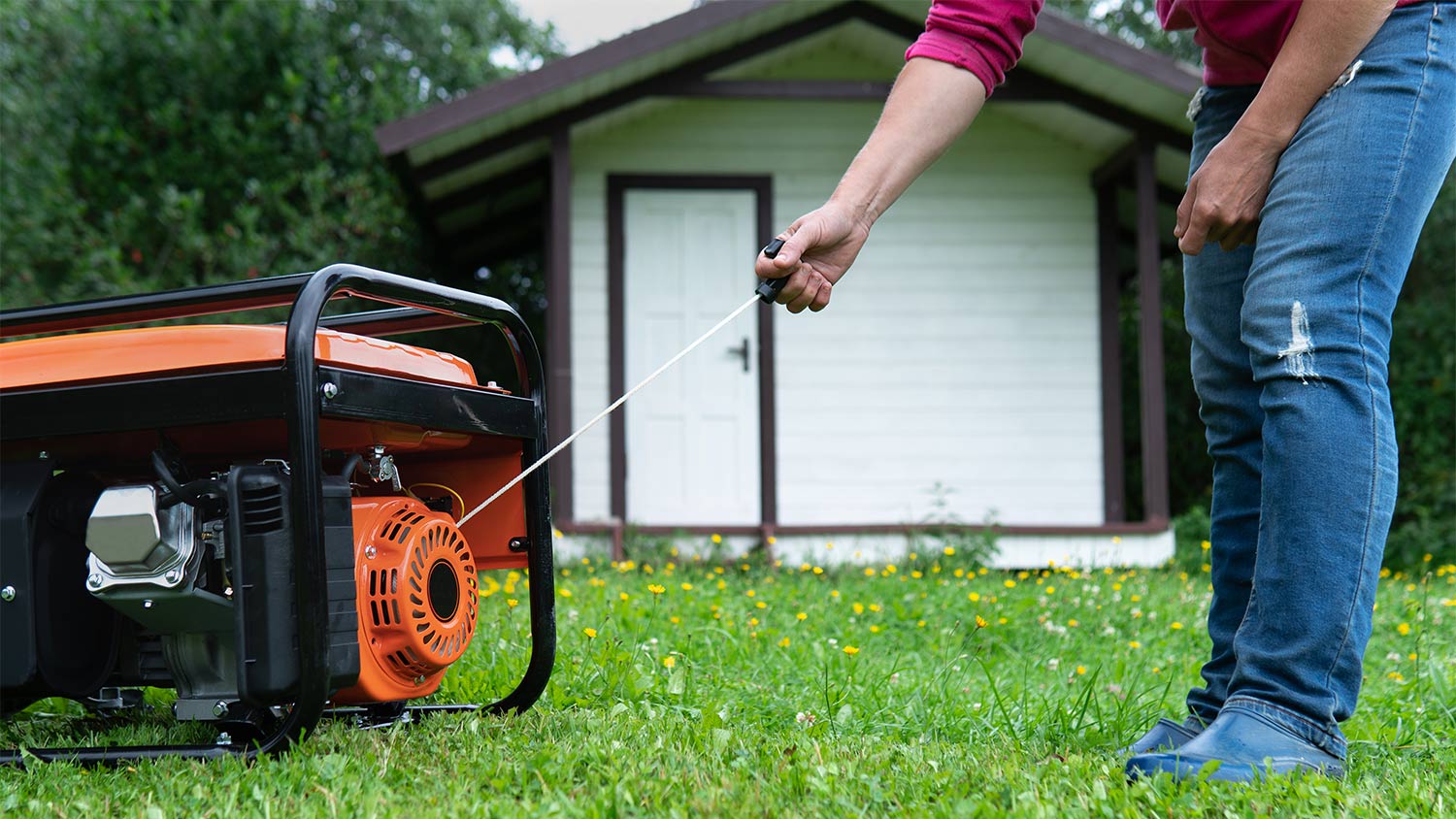
With the right research, you can choose the ideal portable generator for your home and set it up to perform optimally. Follow these steps for best results.
1. Calculate Your Wattage Needs
Find your home wattage needs by taking a careful survey of everything you want to power during an emergency. That could include a specific circuit in your home, like the kitchen, or individual appliances like the refrigerator and freezer. Or you can list devices that you want to plug directly into your generator.
Find the rated watts for each appliance by inspecting the product information or look it up in your manual or online. Add all the wattage up, and you’ll have an excellent starting point for picking a generator. Most portable generators power between 4,000 and 8,000 watts, so try to aim within that range.
2. Choose Your Fuel
You have several choices for fuel for your portable generator, each with a different advantage. When it comes to fuel, your choices include:
Gas: Gasoline is the most common fuel for portable generators, as it’s also easy to transport and purchase in limited quantities when you really need it. However, it can require fuel stabilizers and goes bad over time.
Propane (LPG): Propane is more common for whole-house generator installations, but you may still be able to find portable generators that work with propane. Propane requires its own storage tank and prices can vary greatly between regions.
Duel fuel: These generators can work with both gas and propane. Some are even compatible with natural gas lines, too, so you can use whichever fuel is most convenient. However, they tend to be more expensive and more rare for portable generators.
Diesel: Diesel generators are similar to gas, but they’re more efficient and it’s much easier to store diesel than gasoline. Diesel is an excellent choice if you don’t mind paying a bit more for the dedicated fuel.
3. Choose a High-Quality Portable Generator
You know your power output, you’ve picked out a fuel, now it’s time to buy a generator. We recommend choosing one with important features like:
Inverter: Inverter generators include extra hardware that converts electricity into a reliable AC current for your home. It’s safer for your appliances, more efficient for your fuel, and even quieter during operation. But inverter generators also cost significantly more, so there is a trade-off.
Battery starter: Modern generators benefit greatly from speedy, accurate battery starters, although they can be harder to find on portable generators.
Carbon monoxide safety switch: These safety switches automatically shut down the generator if they detect CO levels in enclosed or semi-enclosed spaces.
Low decibels: Some generators can be very loud. Look for quieter generators with lower decibel ratings.
Portability: A generator with attached wheels and a moving bar is much easier to move around.
Grounding features: Modern portable generators should come with their own built-in grounding so you don’t have to install additional ground.
How to Prevent Portable Generator Problems
Your generator manual will include very important safety tips and things you should never do with a portable generator, so review it carefully. We’ve found these general guidelines to prove very helpful, too:
Don’t use the generator around water: Generators cannot get wet, causing them to malfunction, fail, and cause dangerous electrical faults. Don’t use them if it’s raining, and don’t install them anywhere near where rainwater pools after a storm..
Keep generators away from heat: High temperatures can cause fire hazards, overheating, and increased wear on a generator. Keep them away from fireplaces, dryer vents, direct sunlight in hot climates, and so on.
Never start a generator with circuits or appliances attached: Generators need time to come up to full power before they are effective. Check your manual for more information on startup procedures. Likewise, it’s a good idea to disconnect before powering down.
Check oil levels: Many fuel generators have an oil tank for lubricant. You can easily check the oil level yourself with a dipstick (typically built-in) and add more. Make sure the generator has plenty of oil before use.
Clean up around outdoor generators: Keep outdoor generators free of dust and debris, especially after storms.
Drain the tank: If you’re putting your portable generator away until the next storm season or summer project, drain the gas tank by disconnecting the fuel line or run the generator until it runs out of fuel. You don’t want old fuel sitting in the tank for months — that includes fuel that has added stabilizer, which can still run into problems when left unused.
Recharge your generator batteries every few months: Modern generators often use a battery-powered ignition. If that applies to your generator, plug it into a wall outlet and charge it every several months.
DIY vs. Hiring a Pro
For setting up a large, permanent home standby generator, it’s best to hire a local home generator installer to oversee the process to ensure it’s done correctly. You will need to hire an electrician to install a transfer switch or interlock if you plan on powering significant portions of your residence.
However, portable generators are designed to be moved, attached, and disconnected as needed. It’s important that owners understand how they function and how to operate them when necessary. So we don’t recommend asking a generator professional to handle every use unless it’s absolutely necessary.
Frequently Asked Questions
You may need a permit for a portable generator if you’ll be installing a transfer switch for your primary residence or similar work. Otherwise, a permit for other uses may not be necessary. Check your local building codes or ask a local generator installer for more information about your local regulations.
These advanced generators use a key fob or a smartphone app to remotely start, which is ideal for getting power back on immediately without venturing outside. This feature is more common on whole home generators, but you may be able to find it on large portable generators, too.
Set it on a stable surface, and check that the fuel valve is closed, all tanks are closed, and the starter battery is disconnected. For longer transport, cover the generator for protection. Do not lay a portable generator on its side during transport.
You can accidentally overload your portable generator, but it’s unlikely to cause major problems. Modern generators come with built-in circuit breakers that shut down in case of an overload to prevent an electrical emergency. But you should check what your generator is rated for and cut down on the number of devices it’s powering if you experience an overload on your device.


